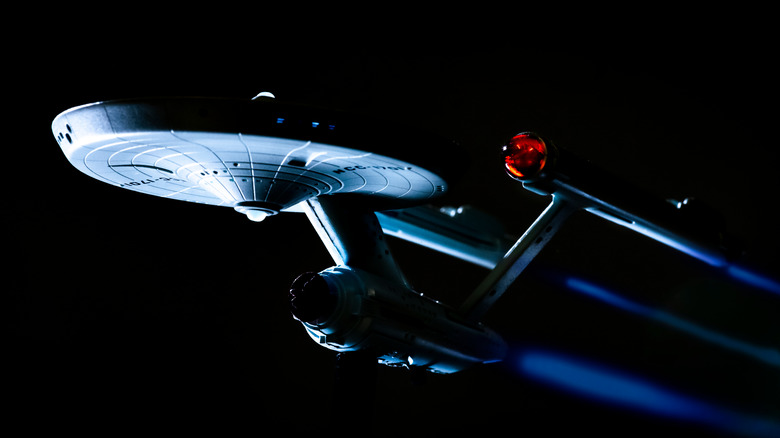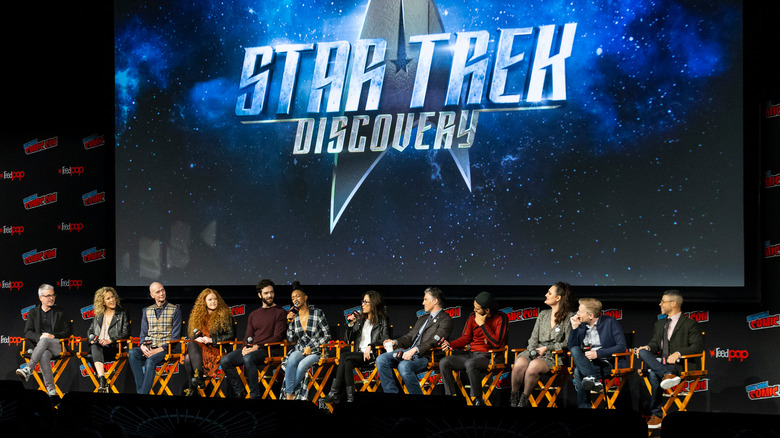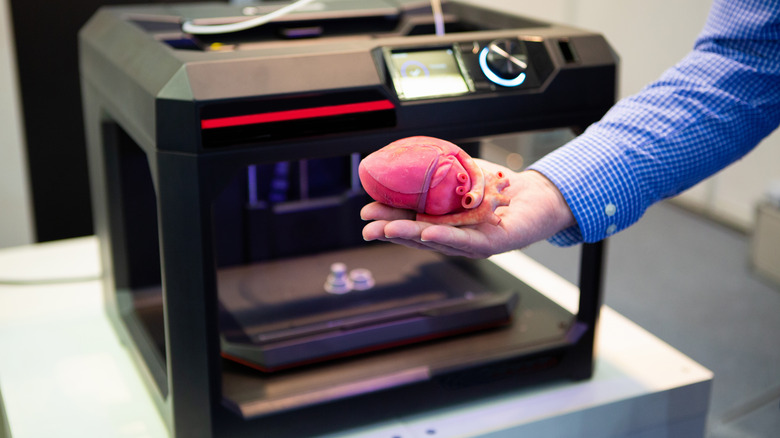How Are The Replicators Supposed To Work On Star Trek?
Coffee, black, or Earl Grey, hot? If you're a "Star Trek" fan, you've probably heard a character or two say these words. You might think of Captain Kathryn Janeway of "Star Trek: Voyager" and Captain Jean-Luc Picard from "Star Trek: The Next Generation" and "Picard" are just big breakfast drink fans, and they are, but they're also busy leaders of working space starships. They needed a way to get their favored drinks fast. So they turn to their replicators.
Replicators are essential machines in the "Star Trek" universe. This device can reproduce food, tools, and sometimes even random viruses. Depending on the writer's imagination, it can make almost anything. In times of need, the replicator is the only thing that can feed the crew. And being so far from Federation ports and basses, replicators were their best bet in getting that one part they need to fix their warp core containment.
While the replicator has made many appearances on the shows — Janeway even took hers apart in one episode — it's remains a tool of mystery to many. It acts a lot like a transporter, because it kind of beams food. So how are these things imagined to work in the first place? Of course, this is a starship, and the explanation is very sci-fi.
It's kinda gross, really
According to the "Star Trek" website, the reason some people see replicators as mini-transporters is because, well, it technically is one. In "Star Trek," transporters "beam" people and items to different places. They dematerialize matter and reconstitute it somewhere else. The replicator essentially acts the same way. So what matter does it work with? Comic Book reported the not exactly appetizing news. An episode of "Star Trek: Discovery" explained the material comes from fecal matter.
Replicators cannot make new matter because physics simply doesn't allow for that. In the "Trek" universe, scientists had developed a mixture of different materials specifically for food replicators, but it was a finite resource. And so the resource-poor Federation of Planets used something humanity never runs out of: Its own waste. The episode suggests that this sacrifice doesn't come at a human cost, which means the Federation can still claim the moral high ground against their enemies.
Replicators have been in use since the 24th century in the "Trek" universe, though very little has changed around the technology. No matter how advanced, a replicator will only make food programmed into its system. Even so, it beats having to sacrifice a lot of cargo space just to bring thousands of boxes of popcorn. Replicated food will taste mostly the same as the food it mimicked and will also have the same nutritional density. However, that has never stopped intrepid starship captains from bringing the real thing.
Real-life version
Having a replicator certainly means an ability to reproduce just about anything you can think of, provided it's programmed into the machine. So it's very easy to fall into the trap of featuring it in every episode. Bleeding Cool wrote that "Star Trek" writer and producer Ron D. Moore hated the replicator, and so did most people in the writer's room.
Moore said the replicators made everything too easy. If they were stuck somewhere, a character could just replicate something to get them out of a jam. So the writers sometimes avoided using replicators altogether in their episodes.
Fine, in a narrative sense, replicators may make things too easy. But imagine if there was a real-life replicator available. Then, we'd maybe get rid of food deserts once and for all. Fortunately for us, scientists have been working on recreating replicator technology. Per SyFy, researchers at the University of California, Berkeley invented a machine that projects light onto resin to produce an object in minutes. It doesn't re-materialize matter from subatomic particles, but it sure beats waiting hours watching a 3D printer squeeze out plastic.
The technology is based on computed technology, the kind of thing used in medical 3D imaging. The scientists call their new process computed axial lithography. It's not yet fully commercially available, so until then, we're stuck watching our favorite characters eat food replicated from poop.


